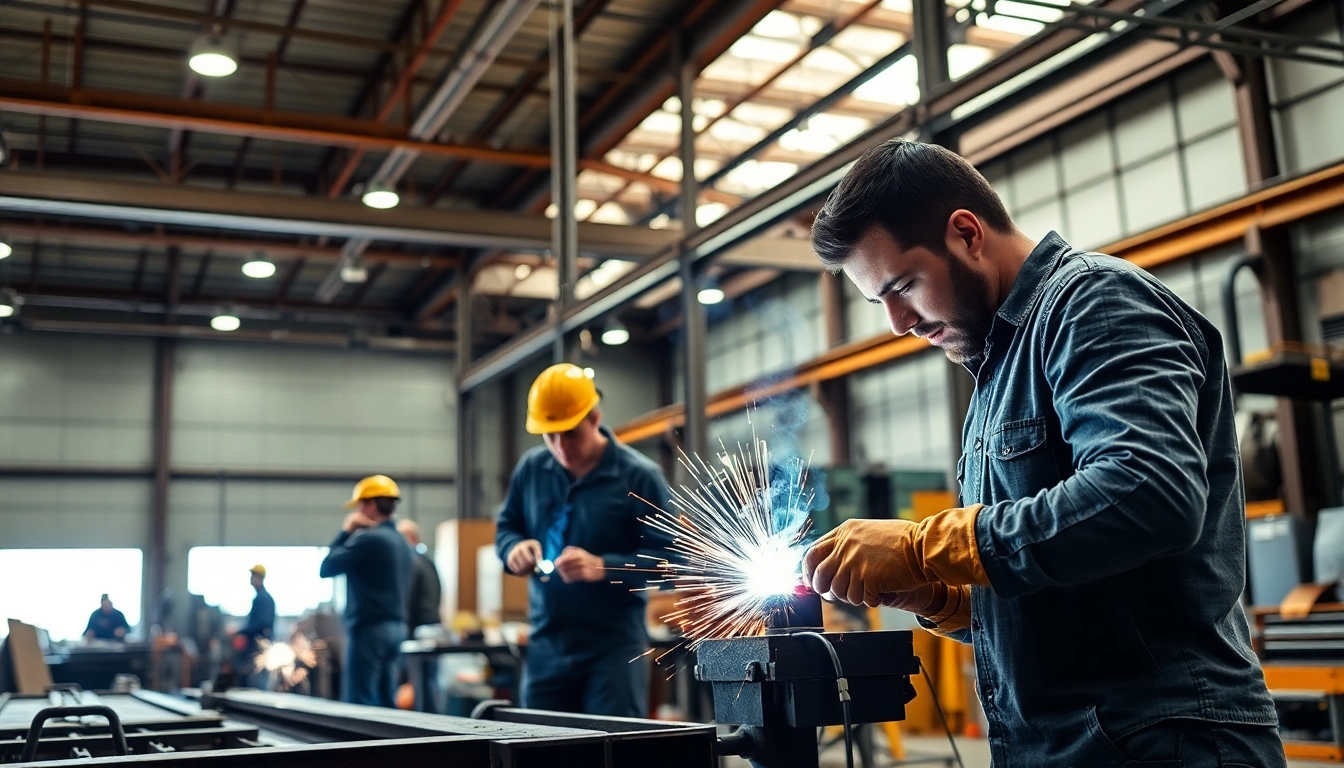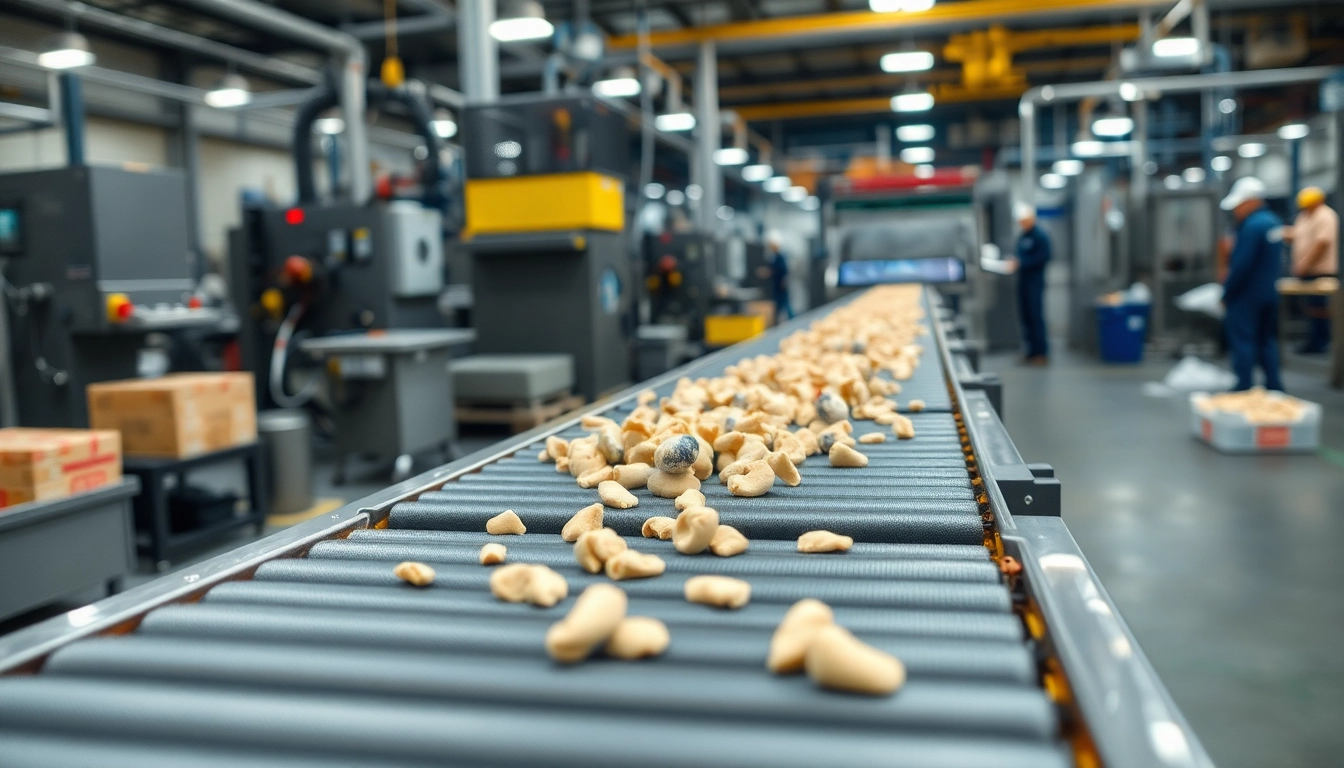Understanding Industrial Fabrication in Edmonton
Definition and Scope of Industrial Fabrication
Industrial fabrication encompasses a wide range of processes used to create structures and components from raw materials. This discipline is integral to various industries, including construction, manufacturing, and heavy machinery. In Edmonton, industrial fabrication plays a crucial role in supporting both local and regional economic development, providing essential support to sectors such as oil and gas, renewable energy, and manufacturing. Fabricators convert materials like metal or plastic into finished products through processes like cutting, bending, and assembling, enabling businesses to meet the demand for custom solutions.
Key Techniques in Fabrication Processes
There are several key techniques that define the industrial fabrication processes in Edmonton:
- Cutting: This method uses various tools to cut raw materials into desired shapes and sizes. Techniques may include laser cutting, plasma cutting, and waterjet cutting.
- Bending: This involves deforming materials to achieve specific angles and shapes, often using hydraulic presses or punches.
- Welding: A critical fabrication technique, welding joins materials through melting and fusing processes, ensuring strong structural integrity.
- Assembly: This encompasses the process of putting together various fabrications to create larger products, ensuring that they meet design specifications.
The combination of these techniques allows Edmonton’s fabricators to deliver highly customized services tailored to specific project requirements.
Importance of Quality Assurance in Fabrication
Quality assurance is paramount in industrial fabrication. Implementing strict quality control measures throughout the fabrication process can significantly reduce defects and enhance the durability of finished products. Fabricators in Edmonton often adopt standards such as ISO 9001 to ensure consistent quality. Furthermore, regular inspections, testing methodologies (such as non-destructive testing), and detailed documentation help in maintaining high quality levels. The continuous improvement of processes through feedback loops and calibration not only helps in meeting client expectations but also enhances the reputation of the fabrication service.
Innovative Approaches to Industrial Fabrication
How Technology is Transforming Fabrication
Technology is reshaping the landscape of industrial fabrication. From advanced design software and automation to additive manufacturing (3D printing), the capabilities of fabricators are expanding dramatically. Computer-aided design (CAD) allows for precise modeling of products, while computer numerical control (CNC) machining automates production, increasing both speed and accuracy. The adoption of Industry 4.0 technologies enables real-time monitoring and data analysis, helping fabricators optimize their operations and reduce waste. Such innovations can lead to significant cost savings and faster turnaround times.
Best Practices for Efficiency in the Workshop
To enhance productivity and efficiency, implement the following best practices in the workshop:
- Lean Manufacturing: This philosophy focuses on minimizing waste without sacrificing productivity. Adopting lean principles helps fabricators streamline operations, which is particularly beneficial in the competitive Edmonton market.
- Continuous Training: Keeping staff well-trained in the latest techniques and technologies ensures a skilled workforce ready to adapt to new challenges or equipment.
- Regular Equipment Maintenance: Ensuring that all tools and machinery are consistently serviced minimizes downtime and extends the lifespan of equipment.
- Workflow Optimization: Analyzing the production flow can identify bottlenecks and areas for improvement, thereby increasing overall efficiency.
Case Studies: Success Stories of Local Fabricators
Several fabricators in Edmonton stand as examples of successful implementation of innovative practices. For instance, industrial fabrication edmonton firms have leveraged new technologies to reduce lead times significantly while maintaining quality. Another case highlights a local company investing in robotic welding, which streamlined their production process and improved weld quality, demonstrating the impact of automated solutions in a traditional industry.
Choosing the Right Fabrication Service in Edmonton
Evaluating Qualification and Experience of Fabricators
When selecting a fabrication partner, it is essential to assess qualifications and experience. Look for companies with a solid track record in the industry, as longevity often correlates with reliability. Certifications from relevant industry standards should also be investigated—such as AWS (American Welding Society) certifications for welding services. This not only ensures that the company adheres to high standards but also reflects their commitment to ongoing education and professional development.
What to Look for in a Fabrication Partner
Here are key factors to consider when evaluating potential fabrication partners:
- Customization Capability: The ability to provide tailored solutions is vital. Ensure the fabricator can adapt to your specific project requirements.
- Technology and Equipment: Modern machinery and software can greatly enhance efficiency and accuracy, so inquire about their technological investments.
- Customer Support: Robust communication and customer service can set a fabricator apart. Ensure they are responsive and willing to provide support throughout the project lifecycle.
- Portfolio of Past Projects: Reviewing previously completed projects can give insights into their capabilities and how they match your needs.
Comparative Analysis of Leading Fabrication Companies
In Edmonton’s competitive market, several companies excel in industrial fabrication. A comparative analysis regarding service offerings, technology adoption, and client satisfaction can help potential clients make informed choices. For example, some companies may focus on heavy structural components while others might specialize in precision parts for the aerospace sector. Understanding these distinctions will guide businesses in selecting the right partner based on their specific needs.
Challenges in the Industrial Fabrication Sector
Common Pitfalls in Fabrication Projects
Despite advancements, several challenges persist in the industrial fabrication sector. Common pitfalls include underestimating project timelines and budgets, leading to frustrations on both ends. Additionally, inadequate planning can result in design flaws or subpar material selection, impacting the overall quality of the product. Effective communication and detailed project management strategies can help mitigate such issues.
Mitigating Risk Through Process Improvement
Continuous process improvement is essential for mitigating risks related to fabrication projects. Implementing feedback mechanisms, conducting regular project reviews, and encouraging a culture of innovation can lead to significant enhancements. Utilizing data analytics for predictive maintenance of machinery and assessing performance metrics aids in anticipating issues before they escalate.
Adapting to Market Changes and Client Needs
The ability to pivot in response to market changes and evolving client needs is crucial for the longevity of fabrication businesses. Economic fluctuations, shifts in demand, and advancements in materials and techniques require fabricators to be agile. Building strong relationships with clients through open communication channels fosters trust and ensures that fabricators can adapt their services accordingly.
Future Trends in Industrial Fabrication in Edmonton
Emerging Technologies in Fabrication Practices
The future of industrial fabrication in Edmonton is being shaped by emerging technologies. Artificial intelligence (AI) and machine learning are beginning to play a role in optimizing production planning and predictive maintenance. Likewise, the rise of Industry 4.0, with its interconnected devices, enables better data sharing and decision-making processes. Additionally, advancements in materials science are leading to the development of lighter, stronger materials that can enhance product performance.
Environmental Considerations and Sustainability
With increasing awareness surrounding environmental impacts, sustainability is becoming a primary focus in industrial fabrication. Practices such as recycling scrap materials, reducing energy consumption, and adopting eco-friendly materials are essential in minimizing the carbon footprint. Local fabrication companies are starting to integrate sustainability into their business models, responding to the growing demand for ‘green’ manufacturing solutions.
The Role of Skilled Workforce Development
A skilled workforce is crucial for the success of industrial fabrication operations, especially as technology continues to advance. Investments in workforce development and training programs not only enhance the capabilities of the current team but also prepare the next generation for emerging challenges. Collaborations with technical schools and universities can create pathways for students to enter the industry, thus addressing the talent shortage in skilled trades.



